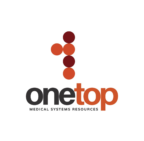Protecting Frontline Workers: The Human Safety Dividend of Onsite Waste Treatment
Healthcare facilities save lives every day, but they also generate a steady stream of medical waste — sharps, contaminated PPE, laboratory residues, and infectious byproducts. For most LGU-operated hospitals and rural health units, the task of handling this waste falls on some of the most under-recognized members of the health workforce: waste handlers, janitors, and support staff.
These workers are the invisible backbone of hospital safety. Yet in many facilities, they are also the most exposed to hazards. Bags of infectious waste are carried down hallways, loaded into trucks, and transported over long distances before treatment. Every step introduces risks of accidental needlesticks, spills, or exposure to pathogens.
Protecting these workers is both a moral responsibility and a governance obligation. One of the most effective — yet often overlooked — strategies is onsite waste treatment, which reduces risks by neutralizing hazards at the point of generation.
The Human Cost of Delayed Treatment
The current reliance on third-party haulers means untreated waste often sits in storage areas for hours or days before pickup. During that time, workers tasked with moving, storing, or guarding it face significant risks:
Needlestick Injuries – Even a single prick from an untreated sharp can transmit hepatitis, HIV, or other infections.
Spill and Exposure Hazards – Leaking bags and overfilled containers increase the chance of accidental contact.
Transport Risks – Loading untreated waste onto trucks exposes multiple handlers to biohazards.
For frontline workers who are already underpaid and under-protected, these risks add up to a hidden occupational burden that rarely features in health planning discussions.
The Safety Dividend of Onsite Treatment
Onsite autoclaves such as Tesalys systems, distributed in the Philippines by One Top Medical Systems Resources (OTMSR), change the equation by treating waste before it ever leaves the facility.
The safety benefits for frontline workers are immediate and substantial:
Reduced Exposure to Pathogens
Waste is sterilized at source, meaning workers handle materials that are no longer infectious.Fewer Transport Risks
With waste neutralized onsite, there is no need for frequent hauling of untreated waste over long distances.Safer Workflows
Autoclaves are designed for efficiency and ease of use, minimizing manual handling of waste bags and sharps.Psychological Security
Workers know that they are dealing with decontaminated materials, reducing anxiety and stress in their daily tasks.
This “safety dividend” extends beyond individual workers. By protecting support staff, hospitals reduce the risk of workplace-acquired infections that can affect entire health teams.
Governance and Accountability Dimensions
Protecting frontline workers is not only a matter of hospital operations — it is a governance issue. National laws such as:
RA 11058 (Occupational Safety and Health Standards Law)
RA 6969 (Toxic Substances and Hazardous and Nuclear Wastes Control Act)
RA 9003 (Ecological Solid Waste Management Act)
all underscore the duty of institutions to safeguard workers and communities from hazardous exposure.
LGUs, as operators of hospitals and rural health units, bear responsibility not just for patient care but also for the safe working conditions of their staff. Investing in onsite treatment systems signals compliance with these mandates while strengthening institutional accountability.
Beyond Compliance: Building Workforce Trust
When hospitals invest in technologies that reduce occupational hazards, they send a powerful signal: that the lives of workers matter as much as the lives of patients. This builds trust, morale, and retention among support staff — groups often overlooked in workforce planning.
For mayors, municipal health officers, and hospital administrators, the message is clear: empowering facilities with onsite autoclaves is not simply about technical compliance. It is about valuing people — the very workers who keep hospitals safe, clean, and functional.
One Top Medical Systems Resources: Partner in Worker Safety
By bringing Tesalys autoclaves into the Philippines, One Top Medical Systems Resources (OTMSR) enables hospitals and LGU facilities to transform waste management into a frontline worker protection strategy.
OTMSR provides:
Technology deployment matched to facility size and needs.
Training for staff to operate autoclaves safely and confidently.
Technical support to ensure continuity and compliance.
In doing so, OTMSR positions itself not just as a technology distributor, but as a partner in safeguarding the people who safeguard our hospitals.
Call to Action
Every bag of untreated medical waste carried down a hallway or loaded onto a truck represents a risk borne by someone at the bottom of the health workforce hierarchy. These workers deserve better.
For LGU leaders and hospital administrators, the path is clear: move from contract dependence to facility empowerment by adopting onsite autoclave systems.
With Tesalys autoclaves, distributed by One Top Medical Systems Resources, hospitals can deliver a safety dividend that protects frontline workers, strengthens compliance, and demonstrates true leadership in health governance.
Because in the end, protecting those who handle medical waste is not an operational afterthought — it is a measure of how much we value the people who keep our health systems running.



